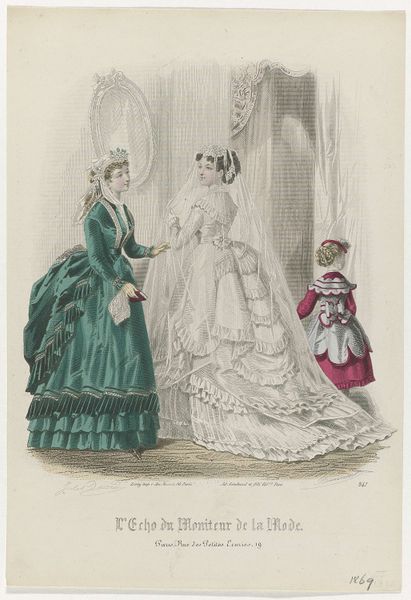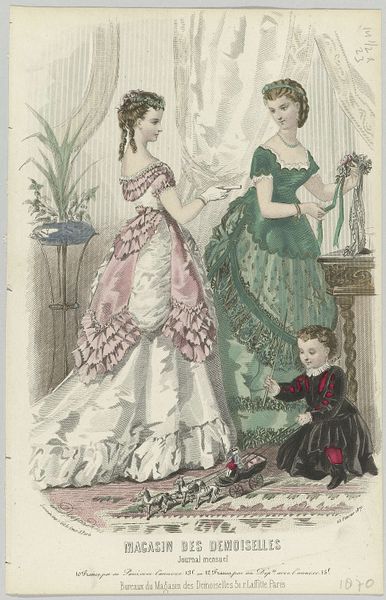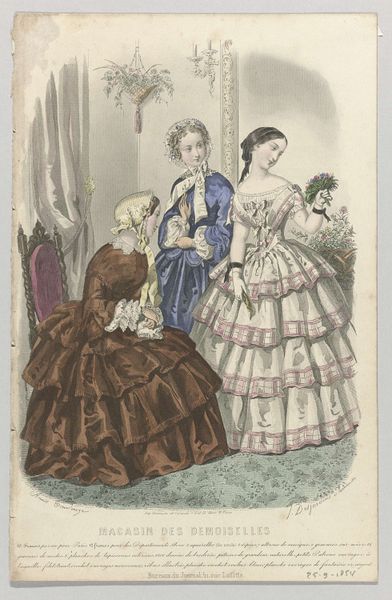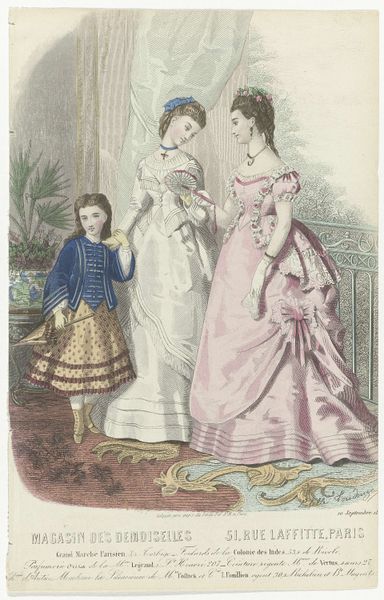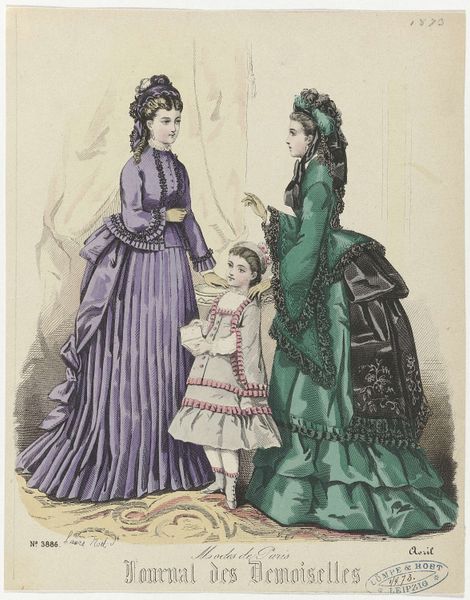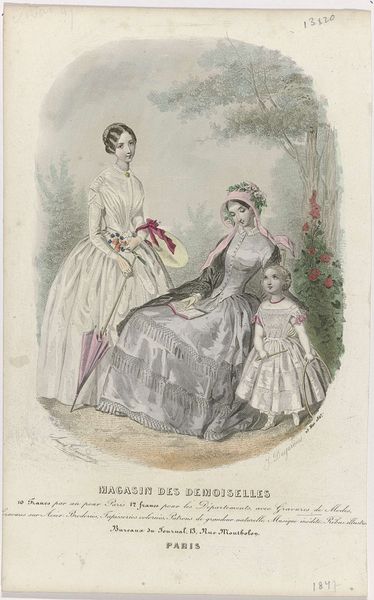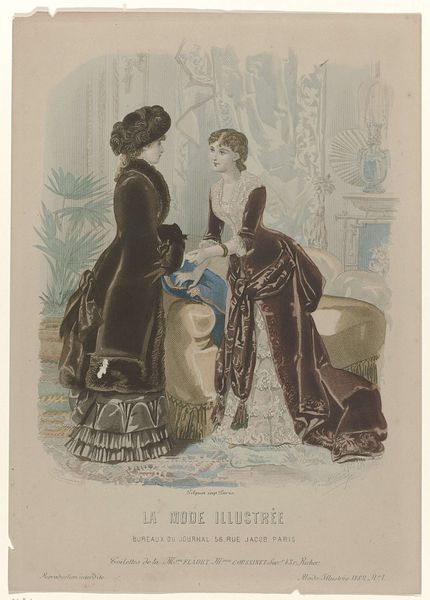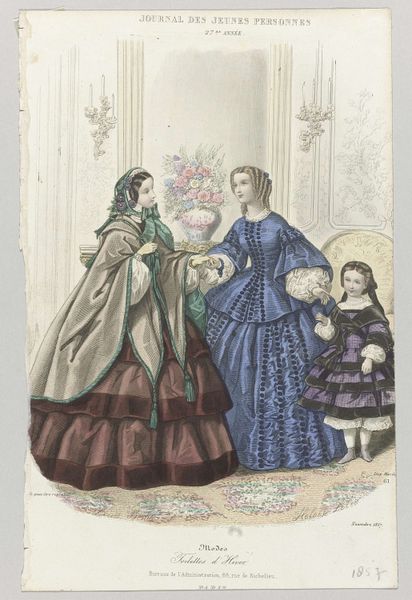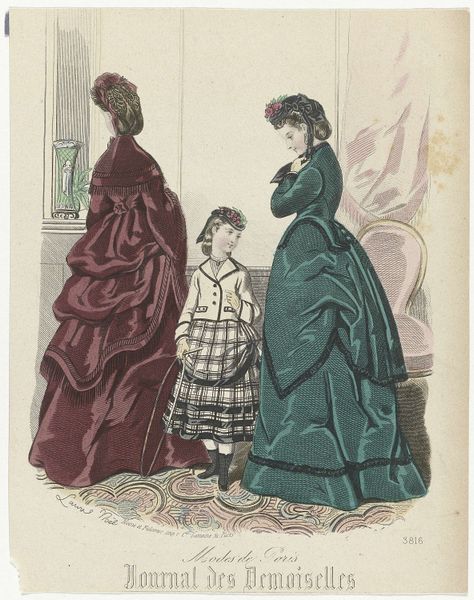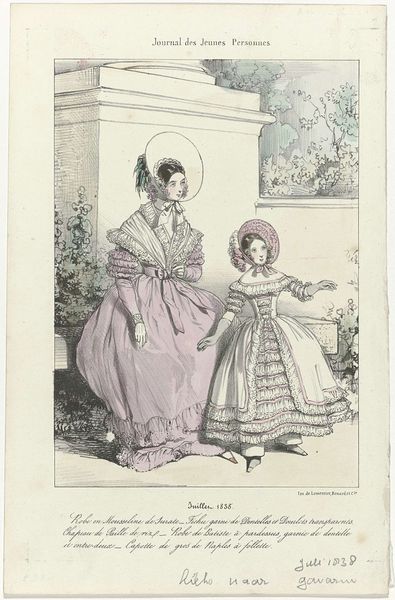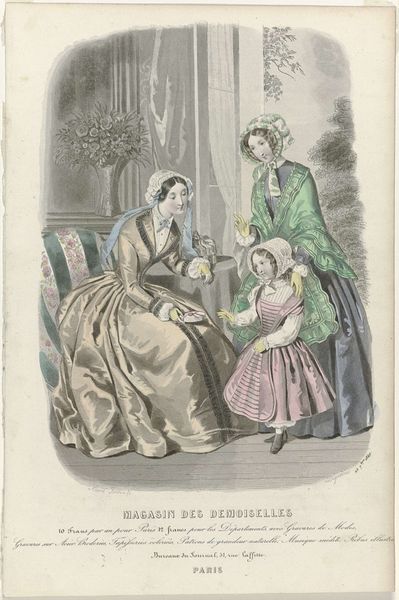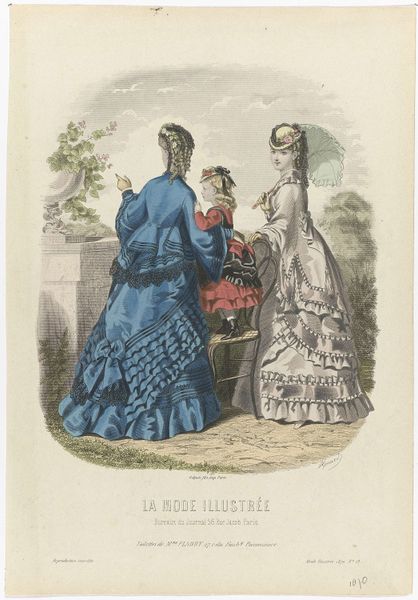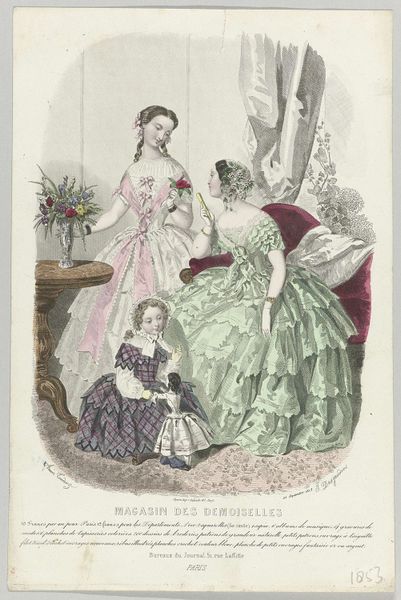
Dimensions: height 258 mm, width 170 mm
Copyright: Rijks Museum: Open Domain
Curator: This print, titled "Magasin des Demoiselles, 25 février 1856, 12 année", published in 1856, comes to us from the fashion plate series by J. Desjardins, and it is a captivating watercolor print! Editor: Immediately, I’m struck by the delicate lines and soft colours. It has this charming and almost idealized atmosphere, you know? Curator: Yes, it is meant to represent feminine elegance, in particular bourgeois identity through dress and comportment. Observe how the layered, meticulously crafted gowns signify status. The details aren't merely aesthetic; they articulate a specific understanding of 19th-century womanhood. The dresses would have been fabricated in specialized workshops and skilled ateliers. Editor: The print gives little glimpse into those working conditions, does it? Though, of course, the fine fabrics, the lace, the detailing speak volumes about labour, right? Consider how each element would be produced. Curator: Precisely. We must acknowledge the labour conditions, especially concerning gender and class. But consider too, the potential for this to influence perceptions of aspiration in other women. Editor: Do you think viewers in 1856 would have considered this “art”? Seems more functional—a commercial product disseminating fashions. What constitutes high art and craft, and how are those boundaries strategically blurred? Curator: That's the crux of it. These prints served both promotional and aspirational purposes, contributing to a growing culture of consumerism that specifically targeted women. It created and promoted archetypes. This, alongside the romanticism, further blurs the line between representation and social expectation. Editor: Definitely. It's so clearly staged to promote very specific aesthetic tastes, down to the posture and the children. I wonder what a materialist history can bring us? It gives us the opportunity to trace materials and understand how consumerism was made palatable by obscuring work behind products. Curator: Absolutely. We need a critical lens, so this idealized domestic scene becomes an entry point for dissecting power structures. It also raises questions about authenticity of feminine image as a signifier within a rapidly evolving visual and material culture. Editor: I think analyzing it from both angles highlights something really interesting about aspiration, class, labour, and gender. It creates many new dimensions. Curator: I agree. Through careful attention to material and an interrogation of its historical placement, this otherwise-charming fashion plate transforms.
Comments
No comments
Be the first to comment and join the conversation on the ultimate creative platform.
